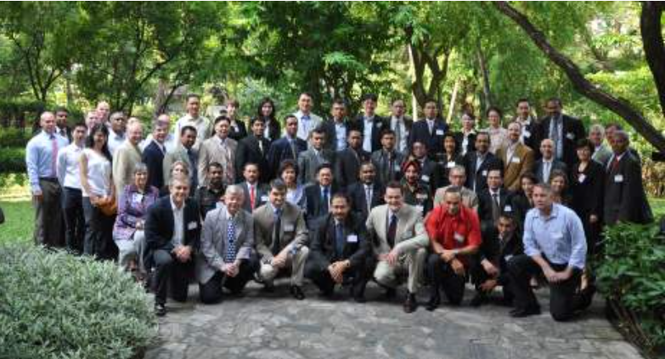
The deployment of military personnel and assets during disaster response operations is increasing, particularly during the emergency phase. In many countries, the military is in a position to provide fast and effective relief as first responders. They can be quickly mobilised and have the capability to reach or provide access to affected populations in remote areas. But cooperation between humanitarian and military actors is not without controversy. Guidance exists at the international level in the Guidelines on the Use of Military and Civil Defence Assets In Disaster Relief (Oslo Guidelines), and various processes are underway to further clarify how military actors and humanitarian organizations can coordinate in disaster operations, while ensuring that humanitarian assistance is provided in an impartial, neutral, and humane manner.
In Asia Pacific, representatives of armed forces and national disaster management authorities from across the region gathered in Bangkok in December 2012 to discuss new and existing guidance for civil-military coordination during disaster response operations. These included the Oslo Guidelines, the Asia-Pacific Regional Guidelines for the Use of Foreign Military Assets in Natural Disaster Response Operations and the ASEAN SASOPs, among others. Discussion focused on the critical importance of complying with accepted principles without compromising the quality of disaster response operations.
Ms Tessa Kelly, IFRC Asia Pacific Disaster Law Coordinator, had the opportunity to brief the group on the Guidelines for the domestic facilitation and regulation of international disaster relief and initial recovery assistance (IDRL Guidelines). She explained that these Guidelines are an important tool for governments to increase coordination among humanitarian relief providers, as well as to improve the quality of relief provided. Ms Kelly noted that while the IDRL Guidelines do not explicitly address the receipt of military and or civil defence assets, the acceptance of these types of bilateral assistance raise many of the same issues addressed by the Guidelines. But as with disaster assistance from international humanitarian actors, governments can avoid many of these common issues by investing in legal preparedness in advance of a disaster.
Following the workshop, a select group of participants gathered for a roundtable discussion to openly discuss coordination between national militaries, regional organisations and humanitarian actors. During the session, Ms Kelly highlighted how foreign military and civil defence actors may face similar legal barriers to humanitarian actors in providing relief, especially with regard to customs and immigration procedures. Ms Kelly noted, however, that it may be more appropriate to regulate military and civil defence assistance separately from disaster assistance from other sources. This is especially true where such bilateral assistance is already the subject of existing guidelines, plans and bilateral agreements, and concerns different approving authorities in the affected country.
Ms Lillianne Fan, a research fellow at the Overseas Development Institute (ODI) who also attended the roundtable described the session as a “fruitful and candid discussion.... with varying perspectives from the diverse range of actors present.” Participants of the session agreed on the need for more dialogue and exchange of information between national militaries, regional organisation and humanitarian actors in order to improve efficiency and coordination between key actors in disaster response operations.
Ongoing discussions such as the Bangkok forum indicate a rising interest among governments in Asia Pacific in the deployment of bilateral or regional military and civil defence units or assets in disaster response operations. At the same time, governments and militaries are seeking stronger voices and more input from the humanitarian sector on how to improve the coordination of their activities in times of disaster. To ensure the effective coordination of disaster response, and to safeguard the neutrality and impartiality of humanitarian assistance, it is essential that the Red Cross Red Crescent and the broader humanitarian community remain engaged in discussions with all actors likely to participate in a disaster response, including military and defence organizations.